|
|
|
|
Products mentioned in this Article
--None--
|
|
|
|
|
|
|
|
|
 |
|
|
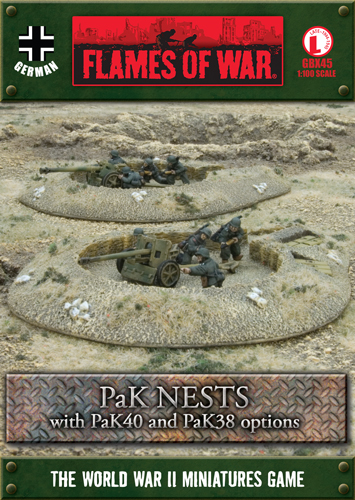 |
PaK Nests (GBX45)
with two 5cm PaK38 and two 7.5 cm PaK40 guns, two individually sculpted nests, two sets of gun crew & two ammunition canister sprues.
Anti-tank gun nests were usually positioned behind the larger bunker such as Panther turrets to protect the the rear approaches. Well camouflaged these nests were a particular threat to tanks in the terrain around Cassino.
This product is no longer currently available for sale...
|
| "PaK Nests can be fielded by using the German Army list in the Cassino handbook, the army organisation diagram must contain the Cassino Fortification options." |
Battlefront TV
Painting the PaK Nests
Jeff is back and this time he is taking a look at how to paint the new PaK Nests featured in Cassino. |
|
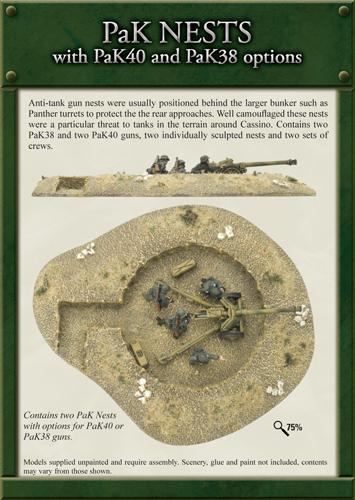 |
The 5cm PaK38 Anti-tank Gun
First issued to the German Army in April 1941, the 5cm PaK38 was the successor of the 3.7cm PaK36 Anti-tank gun. Developed in the late 1930s by Rheinmetall-Borsig; the PaK38 soon proved its worth during Operation Barbarossa as it was one of only a handful of weapons that could effectively penetrate the armour of the Soviet T-34 medium tank.
Mounted on a split trail, the gun was usually towed by half-track but was light enough to be manhandled into position with the aid of a third wheel fitted to the spade piece of the trail. Fitted with a gun shield to provide protection for the crew, the gun was capable of firing both Armour Piercing and High Explosive rounds.
Read the Cassino Design Notes here...
Learn more about Infantry Aces here...
Take a sneak peek at some of the upcoming Cassino releases here...
|
|
"Hits close to a nest will force the crew to duck back, reducing their rate of fire. A good square hit will kill the crew, destroying the bunker."
If a weapon hits a Nest, roll a Firepower Test.
- A successful Firepower Test will Pin Down the Nest.
- Otherwise the Nest is unharmed.
If a weapon Pins Down a Nest, immediately roll a second Firepower Test.
- If the second Firepower Test is successful, the Nest is Destroyed.
- A failed second Firepower Test leaves the Nest Pinned Down, but otherwise unharmed.
|
| The 5cm PaK38 Nest in Flames Of War |
Weapon
|
Mobility
|
Range
|
ROF
|
Anti-tank
|
Firepower
|
| 5cm PaK38 Nest |
Bunker |
24"/60cm |
3 |
9 |
4+ |
|
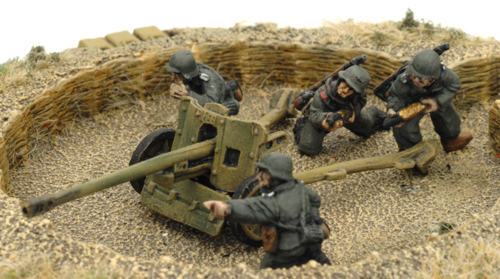 |
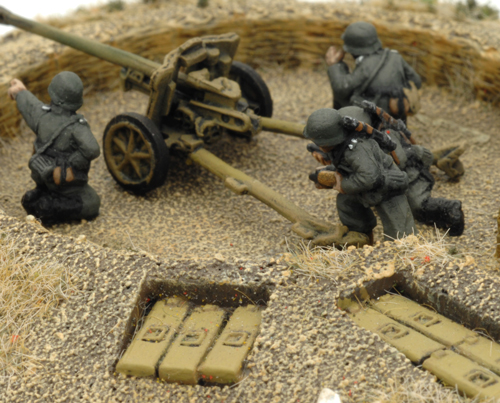 |
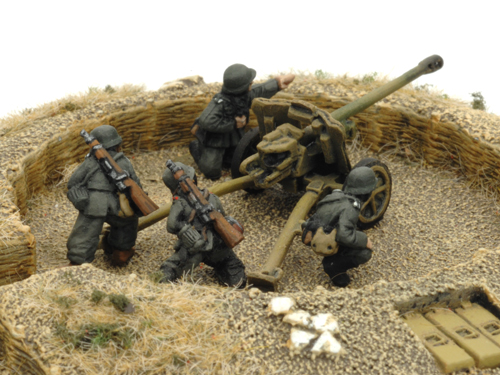 |
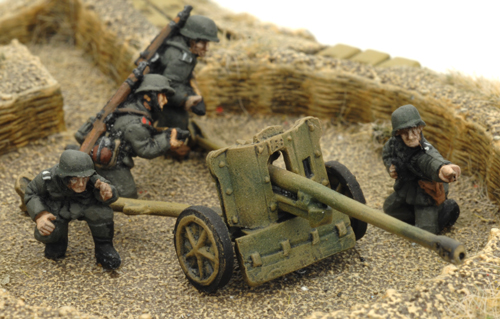 |
The 7.5cm PaK40 Anti-tank Gun
Development of the 7.5cm PaK40 began in 1939, with both Krupp and Rheinmetall developing designs for testing and adoption. Initially the weapons development was slow, but priority was soon bumped up after Operation Barbarossa in 1941 with the appearance of heavy Soviet armour like the KV-1.
The first Rheinmetall guns rushed off the production line in November 1941. The gun retained many features of the lighter 5cm PaK 38 gun. It had a muzzle brake to reduce recoil, a double skin shield for added protection of the breech, and torsion-bar suspension for motor towing. The trail retained the tubular arms of the PaK38 design, but was made of steel for added strength rather than the aluminium of the PaK38.
The newly introduced Panzergranate 39 weighed 6.8 kg and achieved a penetrating power of 132mm of armour at 500m with a muzzle velocity of 792 meters per second.
Guns & crew figures designed by Evan Allen
Nests designed by Jason Buyaki
Painted by James Brown |
| The 7.5cm PaK40 Nest |
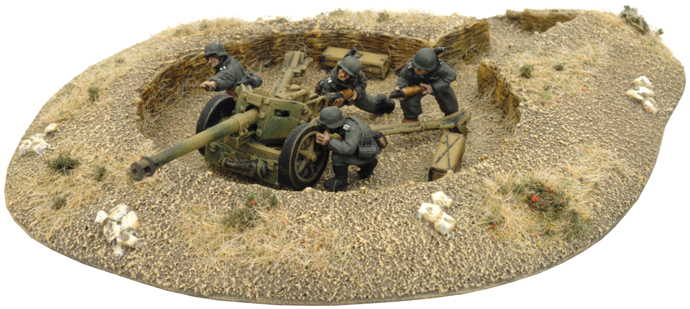 |
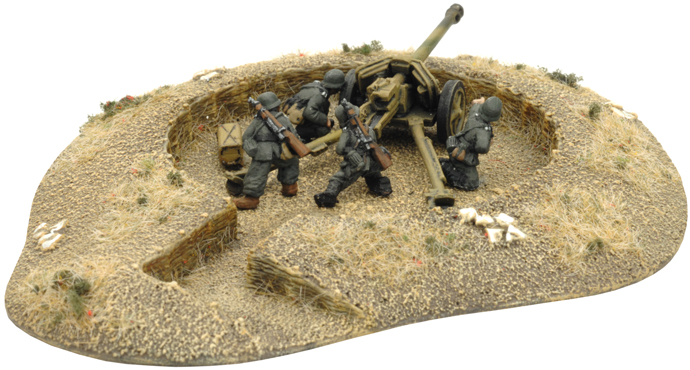 |
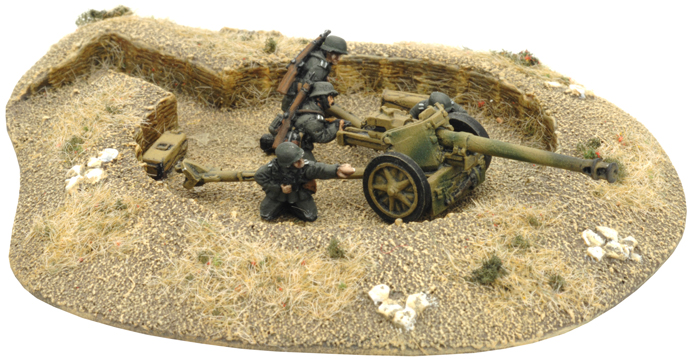 |
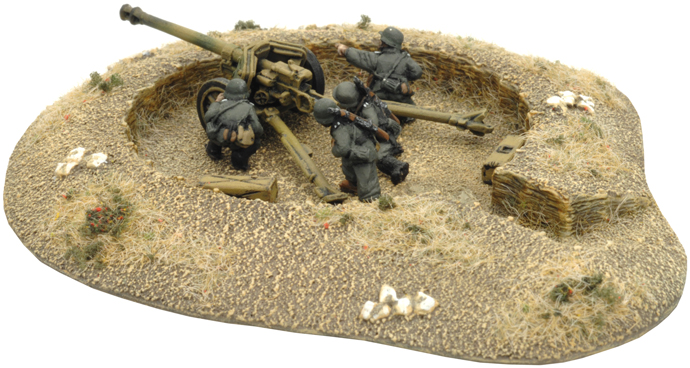 |
| The 7.5cm PaK40 Nest in Flames Of War |
Weapon
|
Mobility
|
Range
|
ROF
|
Anti-tank
|
Firepower
|
| 7.5cm PaK40 Nest |
Bunker |
32"/80cm |
2 |
12 |
3+ |
|
| The PaK Nest in Action at Cassino |
Last Updated On Wednesday, February 20, 2019
|
|
|